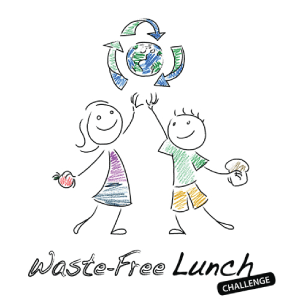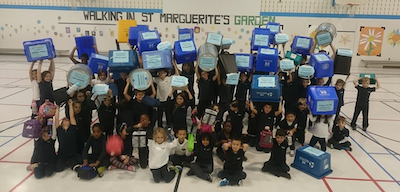
From 2010-2015 the Waste-Free Lunch Challenge was our signature environmental education program to inspire and empower students, educators, and parents to minimize food and packaging waste in school and at home. It focused on avoidance through awareness; prevention through 3Rs; reduction through better management; and proactive and informed purchasing.

One week before the challenge takes place, students engage in a hands-on learning experience and perform a waste audit to assess how much food and packaging waste is typically generated at lunch. For the Waste-Free Lunch Challenge itself, another waste audit is conducted and the difference is measured and reported to back to us.
Through activities students see first-hand how their efforts to reduce and divert waste have significant impact on waste generation. They also learn about smart consumption, resource conservation, and acquire a better understanding of what is and isn’t recyclable.
As many teachers and parents have told us, students quickly become the educator and watchdog to ensure proper waste management techniques are implemented in school and at home through packing and purchasing decisions, and putting discarded items in the correct bins.
I was thrilled to note that after the Waste-Free Lunch Challenge was over, the next pizza lunch my students still brought their own plates. At snack time and lunch time students are bringing food in reusable containers and taking food they don’t eat home with them. In addition we are gathering gently used books to have a used book sale. Money earned will be used for environmental projects in the new year.
Teacher
Teachers connected the Waste-Free Lunch Challenge to many areas of their school curriculum, including math, science, and arts. Through experiential learning and discovery, students gained an appreciation for waste minimization and environmental conservation. For example, teachers utilized the data from the waste audit to practice basic arithmetic or mathematical conversions.

Ontario schools have prevented over 100,000 kilograms (220,000 pounds) of food and packaging from entering disposal through the Waste-Free Lunch Challenge.
In 2014, the average Waste-Free Lunch Challenge student was able to reduce their waste from 33 grams to just 21 grams per day. Some schools are able to reduce their waste down to just three grams per student per day.
Between 2010 and 2015 an average of more than 100,000 students participated in the challenge every year.
As primary consumers and decision-makers, parents’ role in Waste-Free Lunch Challenge was essential for program success. That’s why we offered a variety of resources to encourage smart purchasing to pack waste-free lunches.

The Eco Team was shocked at how many people throw uneaten food in the garbage, throw recyclables in the garbage and still use plastic baggies instead of reusable containers. They wanted to continue educating the other students by creating Smart Board presentations to present to every class.
Teacher
Circular Innovation Council is a registered charity.
Charity Registration Number: 119112118 RR 0001